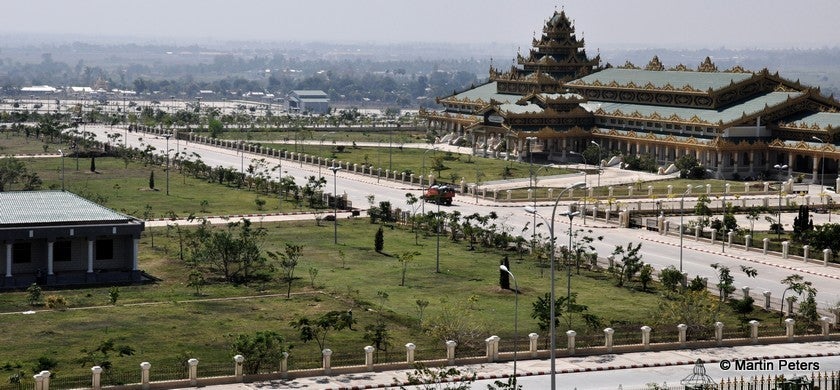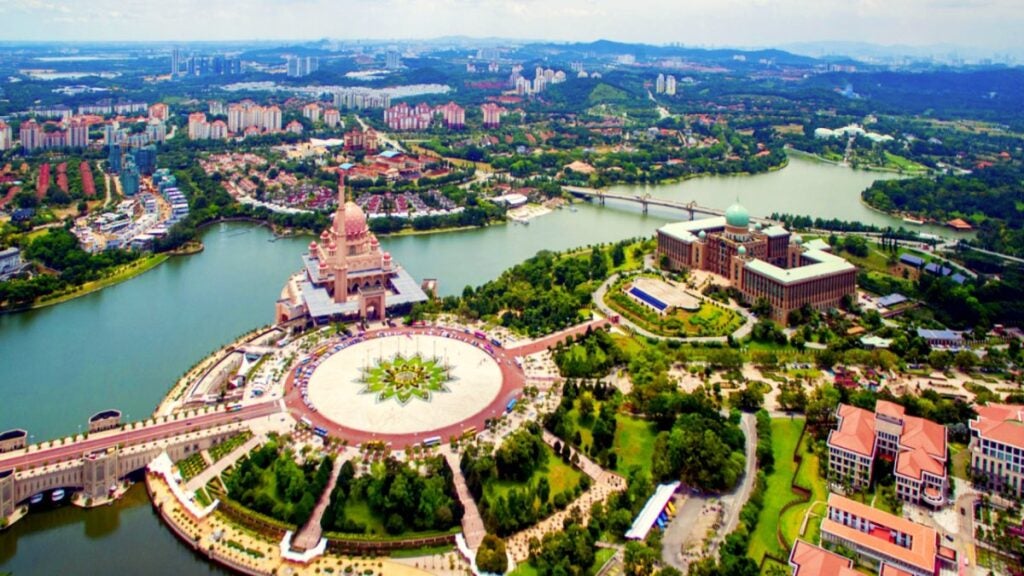Nusantara and Other Capitals of the Future
In a recently completed seed project, we tracked cities that have been referenced in narratives surrounding the development of Nusantara—Indonesia’s new national capital—and two other ex-novo administrative capital projects in Southeast Asia—Naypyidaw (in Myanmar) and Putrajaya (in Malaysia). In the case of Nusantara today—as with Putrajaya during the 1990s—references to other cities are much more than merely sources of inspiration; they have been an important part of the political process of legitimising new capital city visions. Existing cities become what sociologist Thomas Gieryn has termed “truth-spots” in contest over the desirability of future cities and the form that they should take.
In our article “Points of Persuasion” published in late 2022, we built upon Gieryn’s work on “how places make people believe” to identify ways in which existing cities give credibility to future city visions. We identified three types of truth-spots used in the development of the capital cities in our study. First, aspirational truth-spots serve as sources of “good practice”, or as models to emulate. Second, antithetical truth-spots serve as cautionary lessons, highlighting future developmental pathways to avoid. Third, anticipatory truth-spots signal upcoming trends, and are perceived and presented as harbingers of times to come.
All three of these heuristic types of truth-spots are in evidence in the ongoing politics of Nusantara. Indonesian president Joko Widodo (“Jokowi”) has cited Canberra as an aspirational reference point for an Indonesian capital of the future that is both “smart” and “green”. In an official trip to Canberra in February 2020, Jokowi enthused to the Indonesian media about specific views of the Australian capital—a vantage point to survey the use of natural topography in its design and layout—as a model for the transformation of Bukit Suharto, a historic hill in the Nusantara area.

In contrast to such invocation of Canberra as an aspirational truth-spot by Nusantara’s proponents, Naypyidaw has been invoked in negative terms by opponents of the new Indonesian capital project. Built on a vast scale, heavily securitised and located in a region of Myanmar far beyond the commercial hinterland of the previous capital Yangon, Naypyidaw is a powerful antithetical truth-spot for Nusantara. The capital of Myanmar has been referenced in public deliberation of Nusantara in terms of dangers—even the folly—of building a lifeless city, which is exclusionary to locals and occupied by civil servants who would much rather be back in Yangon (or in Indonesia’s case, Jakarta).
Our work also points to how the very same city may be read and referenced in different ways by different interest groups. While Naypyidaw as antithetical truth-spot bolsters the view that persisting with Jakarta is preferable to moving Indonesia’s capital to faraway East Kalimantan —in the way that Yangon is valorised in opposition to Naypyidaw—Jakarta is also frequently cast in dystopian terms in legitimising narratives for Nusantara. In part, that clearly has to do with long-recognised mega-city problems—congestion, traffic, pollution and floods. However, the problematic of Jakarta is also invoked in more prospective terms by those in favour of shifting Indonesia’s national capital. As an anticipatory truth-spot, Jakarta is narrated as part of a near-future context of higher sea-levels and more extreme climatic events that exceed the capacity of already strained capital city infrastructure.

The contested narrative development of Nusantara is potentially mappable from material in the public domain. The same is true in the case of Putrajaya through excavation of media and other archives. But Naypyidaw is very different owing to the secrecy surrounding its genesis and development under military rule. This is not to say that truth-spots played no role in the making of Naypyidaw, only that these cannot be clearly identified or analysed from public discourse, debate or deliberation. Drawing instead on existing published academic work on the urban politics of Yangon, it is plausible that reformasi street protests in Southeast Asian cities such as Jakarta or KL in the late 1990s (a pivotal period of collective citizen action in both nations) spurred Myanmar military elites to move the capital to Naypyidaw. Again, there is an anticipatory dimension here. Street protest in Jakarta, where reformasi demonstrations helped topple President Suharto, suggested the likelihood of rising demands for political transition across the region that would be difficult to resist in an existing dense and restive capital city such as Yangon. Jakarta as truth-spot thus not only anticipated further/heightened street protest in Yangon but also enabled pre-emptive actions to avert regime change by building Naypyidaw as a new administrative capital for civil servants and military personnel.

It is impossible to substantiate the geographies of influence and persuasion involved in the making of Naypyidaw without access to sources and resources beyond the public domain. At the start of our seed project, we were hopeful of accessing such resources through interviewing former high-ranking military figures or through archival and observational fieldwork in Naypyidaw. The military coup in 2021 nullified those possibilities and our hopes. By then, our initial findings were leading us to ask deeper questions about the interplay of geographical and sociological imaginations, discourses on planning and urbanisation, and the actual trajectories of development. We had to drop Naypyidaw from our plans to conduct further research, but we intend to keep an eye on it as part of relational comparisons.
Our research study seeks to elaborate on our initial findings and theorisation of truth-spots shaping the making of future cities. We also thought there was a need to include the past and present development of Singapore into our relational comparative analysis. Futures thinking is central to the making and remaking of Singapore as a city-state and subsequently as a regional and global hub. Given their regional proximity, how did or does Singapore, as one of the most advanced “capital” cities in Southeast Asia, serve as a truth-spot for Putrajaya and Nusantara, and vice-versa? Conversations regarding this question led us to consider the development of Jurong Town in the 1960s and 1970s, the development of Marina Bay in the 1990s and 2000s, and the impending redevelopment of Jurong Lake District in the 2020s.

Our research study titled “Capitals of the Future: Place, Power, and Possibility in Southeast Asia” which started in August 2023, is funded by the Ministry of Education Academic Research Fund Tier 2 (Expert Panel 4) and is hosted in ARI. In addition to Daniel Goh as principal investigator and Tim Bunnell as co-investigator, the research team includes Lee Kah-Wee from NUS (National University of Singapore) Architecture and Nick Smith at Barnard College as collaborators. The team also involves Lim Seng Boon at Universiti Teknologi MARA and Wilmar A. Salim at Institut Teknologi Bandung as local collaborators with Priza Marendraputra, a recent Ph.D. graduate from the University of Wisconsin-Madison as a research fellow.
Our study aims to understand the interaction between imaginations of the future, discourses of urban planning, and pathways of urban development. Interdisciplinary in thrust, the research encompasses approaches from geography, sociology, history, and planning studies. We seek to answer the following questions. How do sites of urban planning in Asia reflect and generate imaginations of the future? What roles do references to other cities and sites play in these imaginations of the future? How do inter-referencing discourses influence the development of cities of the future and change over time with the development of the cities concerned?
From the preliminary findings of “Points of Persuasion”, we have identified three key dimensions of the future in discourses of planning: technological, environmental, and civilisational. The technological dimension involves the adoption of disruptive technologies as opportunities for research and development, industrial growth and social reform. Cities of the future seek to embrace smart technologies for the next industrial revolution and prioritise informational connectivity and multimedia literacy. For the environmental dimension, the focus is on the relationship between humans and nature, sustainability, and the current climate crisis. The civilisational dimension emphasises imaginations of past civilisations and cultural symbolisms that connote ideas of modern global communities and cosmopolitan social harmony.
The inclusion of Singapore in our relational comparative analysis has impelled some important theoretical and methodological innovations. Its inclusion provides us with a staggered planning chronology from the 1960s to the 2020s to see the complex interplay of imaginations, discourses and development. The older sites give us more runway and depth for the analysis of historical pathways that inform our analysis of more recent sites, particularly the ongoing planning and shifting imaginaries surrounding Nusantara. As a result, we are adopting a three-phase mixed-methods sequential design methodology. Phase 1 involves both qualitative and quantitative data collection that will reveal the relationships, factors, and events to be explained in the next phase. Phase 2 involves comparative explanatory research that will examine the historical pathways of urban development, which will form the basis for structuring the exploratory research into the inter-city discourses of urban futures involving qualitative data collection in Phase 3.
Incorporation of both Putrajaya and Singapore into the project means that our definition of “capitals of the future” extends beyond nation-state capital cities. Unlike plans for Nusantara in Indonesia, Putrajaya is not a national capital city, but merely the site of Malaysia’s federal government administrative centre. We nonetheless understand both Putrajaya and Nusantara as capitals of the future in view of the high-profile national discussions, debates and deliberation that entailed in their planning, and the discursive power and imaginative influence associated with their development. The city-state of Singapore is a capital of the future in a sense that is even further removed from conventional nation-state capital city definitions. Singapore is an established centre of planning innovation that has been widely referenced as a model for urban futures elsewhere, and that actively exports its urban expertise as futuristic solutions.

Our nascent study will therefore emphasise the significance of future-oriented urban planning in influencing the development and redevelopment of cities. It will also demonstrate how the economic rationalities of city planning and urban policy mobilities in Asia are affected by imagined futures, woven together by truth-spots that do the work of stitching desires, hopes, promises and expectations into persuasive possibilities. The city persuades and the ways in which it does so shapes the realities and fates of our future urban lives.
The views expressed in this forum are those of the individual authors and do not represent the views of the Asia Research Institute, National University of Singapore, or the institutions to which the authors are attached.
Associate Professor Daniel Goh is Vice Dean of NUS College and Associate Provost (Undergraduate Education) at the National University of Singapore. He is a sociologist who uses ethnographic and comparative-historical methods to study state formation, urbanism, postcolonialism, race and multiculturalism, and religion in Asia. He works closely with anthropologists, geographers, historians, legal scholars, planning scholars, and fellow sociologists on interdisciplinary research projects.
Professor Tim Bunnell is Professor of Geography and Director of ARI where he also leads the research cluster on Asian Urbanisms. Prof Bunnell's recent research concerns the spatiality of urban futures. This spans work on the role of place in authoritative imaginings of "the future"; the planning and construction of new cities and districts in Southeast Asia; and the politics of digital, smart and sustainable futures.
Dr Priza Marendraputra is Postdoctoral Fellow with the Asian Urbanisms Cluster and holds a PhD in Environment and Resources from the University of Wisconsin-Madison. His research is focused on political ecology, exploring intricate human-environment relationships to comprehend urban development’s nature and dynamics. Dr Marendraputra has previously taught courses on green urbanism, planning studios, infrastructure planning, spatial information systems and statistics in Wisconsin, Hawaii and Indonesia. At ARI, he is primarily involved in the project Capitals of the Future: Place, Power and Possibility in Southeast Asia.











